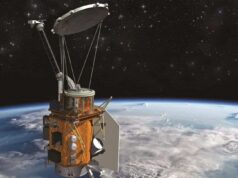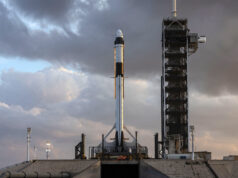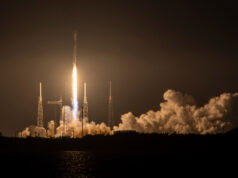
Our robotic envoy to the solar system’s behemoth, NASA’s Juno spacecraft, recently gave mission controllers a bit of a scare. The plucky probe, diligently orbiting Jupiter and sending back breathtaking insights into the gas giant’s turbulent world, unexpectedly entered safe mode not once, but twice, during its 71st close approach on April 4, 2025. For space enthusiasts and the dedicated team behind Juno, this news sparked a moment of collective anxiety. Had the harsh radiation environment around Jupiter finally taken its toll? Would we lose our window into the planet’s mysterious depths?
Thankfully, the story has a positive turn. NASA has confirmed that Juno is back to normal operations! The spacecraft, designed to withstand the intense conditions near Jupiter, performed exactly as intended when it detected anomalies during its close flyby, known as perijove. Safe mode is a precautionary state where non-essential functions are suspended, and the spacecraft prioritizes critical tasks like communication and power management. Think of it as a computer going into sleep mode to protect itself from a potential problem.
The first safe mode event occurred at 5:17 a.m. EDT, roughly an hour before Juno’s closest approach to Jupiter. Then, just 45 minutes after perijove, it happened again. During both instances, Juno’s onboard computer automatically rebooted, powered down its science instruments, and oriented its antenna towards Earth to maintain contact with mission control. This autonomous response highlights the sophisticated engineering that went into building this resilient spacecraft.
Why the safe mode entries? Early indications point towards the intense radiation belts surrounding Jupiter. This environment is the most hostile in our solar system, bombarding spacecraft with high-energy particles that can wreak havoc on sensitive electronics. Juno is equipped with a titanium radiation vault designed to shield its vital components from these harmful effects. However, the sheer intensity of the radiation during close approaches can sometimes trigger these precautionary measures.
This isn’t the first time Juno has entered safe mode since its arrival at Jupiter in July 2016. It happened once in 2016 during its second orbit and again in 2022 during its 39th orbit. Each time, Juno recovered fully, demonstrating the robustness of its design and the expertise of the mission team. These prior incidents provided valuable experience for the engineers at NASA’s Jet Propulsion Laboratory in Pasadena, California, who manage the mission.
Upon receiving the signals indicating Juno had entered safe mode, the mission operations team immediately sprang into action. Their priority was to re-establish high-rate data transmission with the spacecraft and begin diagnosing the situation. Over the following days, they worked diligently to transmit the engineering and science data collected before and after the safe mode events back to Earth. This data is crucial for understanding what triggered the anomalies and ensuring the spacecraft’s continued health.
The fact that Juno performed as expected during both safe mode events is a huge relief. It shows that the spacecraft’s protective mechanisms are working effectively. The mission team will now analyze the downloaded data in detail to pinpoint the exact cause of the safe mode entries during Perijove 71. This analysis will help them refine operational procedures and potentially mitigate the risk of similar events in the future.
The Juno mission is part of NASA’s New Frontiers Program and is led by Principal Investigator Scott Bolton of the Southwest Research Institute in San Antonio. Its primary goal is to understand the origin and evolution of Jupiter. By peering beneath the planet’s dense cloud cover, Juno is revealing secrets about its structure, atmosphere, and magnetosphere. Its findings are revolutionizing our understanding of giant planets and, by extension, planetary systems beyond our own.
Despite the recent scare, Juno’s scientific journey continues. The spacecraft is already gearing up for its next perijove on May 7, 2025. This upcoming flyby holds particular excitement as it will include a close encounter with Jupiter’s volcanic moon Io, passing within approximately 55,300 miles (89,000 kilometers) of its surface. Scientists are eager to gather more data about this intensely active world, and Juno’s observations will be invaluable.
The resilience of the Juno spacecraft and the dedication of the mission team serve as a powerful reminder of humanity’s unwavering commitment to exploring the cosmos. Even in the face of challenging environments and unexpected setbacks, our robotic explorers continue to push the boundaries of scientific discovery. Juno’s return to normal operations is not just a technical success; it’s a testament to the ingenuity and perseverance that drive space exploration. So, while there was a moment of concern, our eye on Jupiter is firmly back in focus, ready to unveil more of the gas giant’s wonders.










